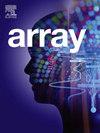A robust and adaptive driver identification framework for intelligent transportation systems
IF 4.5
Q2 COMPUTER SCIENCE, THEORY & METHODS
引用次数: 0
Abstract
Driver identification via behavioral characterization is a popular topic of intelligent transportation systems, yet existing methods often struggle with varying trip segmentation and vehicle type situations. This study proposes a refined deep learning framework to improve model robustness and adaptability under limited driving behavioral signal conditions. Our approach partitions driving trips into fixed-length identification windows, each with overlapping dynamic segments to allow the capture of temporal dependencies of driving patterns. Then, a deep neural network structure that combines a residual sequential autoencoder with an attention mechanism is incorporated to enhance the model identification performance through adaptive regularization. The framework is validated on two real-world datasets comprising 5 truck drivers and 5 sedan drivers through conventional train-validation-test. Our models achieve up to 91% accuracy for sedan drivers and 75% for truck drivers, significantly outperforming the baseline models. Notably, our approach maintains consistent performance across varying segment lengths, with an accuracy difference of only about 4% when the window length changes from 60 to 180 s. Experimental results demonstrate that our framework achieves strong segmentation-variability robustness and cross-vehicle adaptability.
面向智能交通系统的鲁棒自适应驾驶员识别框架
通过行为特征识别驾驶员是智能交通系统的一个热门话题,但现有的方法往往难以适应不同的行程划分和车辆类型情况。本研究提出了一种改进的深度学习框架,以提高模型在有限驾驶行为信号条件下的鲁棒性和适应性。我们的方法将驾驶行程划分为固定长度的识别窗口,每个窗口都有重叠的动态段,以允许捕获驾驶模式的时间依赖性。然后,结合残差序列自编码器和注意机制的深度神经网络结构,通过自适应正则化提高模型识别性能。通过传统的列车验证测试,在包括5名卡车司机和5名轿车司机的两个真实数据集上对该框架进行了验证。我们的模型对轿车司机和卡车司机的准确率分别达到91%和75%,显著优于基准模型。值得注意的是,我们的方法在不同的段长度范围内保持一致的性能,当窗口长度从60秒到180秒变化时,准确率仅相差约4%。实验结果表明,该框架具有较强的分割可变性鲁棒性和跨车辆适应性。
本文章由计算机程序翻译,如有差异,请以英文原文为准。
求助全文
约1分钟内获得全文
求助全文

 求助内容:
求助内容: 应助结果提醒方式:
应助结果提醒方式:


